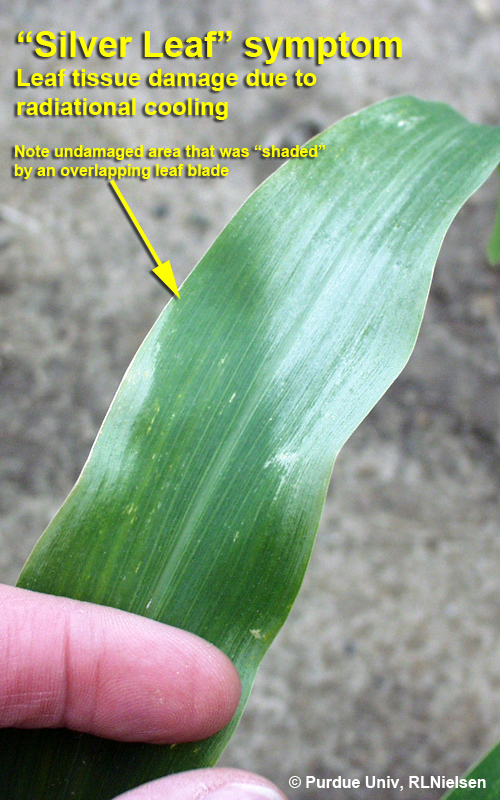Forecasts of unusually low temperatures in late May or early June can set off warning bells for corn growers and lead to fearmongering about frost damage to young corn. Even if frost does not form during these cool nights, minor leaf surface damage can still occur as a result of radiational heat loss from the leaves during cool, calm, clear nights. Such leaf damage results in a curious leaf symptom that may remind you of “freezer burn”.
Rapid heat loss from terrestrial surfaces to the atmosphere (i.e., radiational cooling) can occur on clear, dry (low humidity), calm nights with temperatures in the low 40’s F or cooler. Many areas of Indiana experienced such low morning temperatures over Memorial Day weekend. Minor levels of radiational cooling can damage the outer surfaces of corn leaves that are positioned horizontally or parallel to the night sky. The subsequent symptom of such minor chilling injury is often referred to as “silver leaf” in corn.
The “silver leaf” symptom indeed appears as a silvery or dull gray leaf surface. Any portion of a leaf that was not horizontal to the sky or that was protected by another leaf or plant part will not exhibit the symptom. The effect of this minor leaf damage is negligible, if any. The leaves will not die abruptly as will genuinely frosted leaf tissue. Continued expansion of the whorl will not be restricted in any way. New leaves that expand from the whorl will be normal in appearance. This symptom is more of a curiosity than a nuisance.
Related Reading
Nielsen, RL (Bob). 2020. Assessing Frost / Cold Temperature Injury to Young Corn. Corny News Network, Purdue Extension. http://www.kingcorn.org/news/timeless/FrostedCorn.html [URL accessed June 2021].





